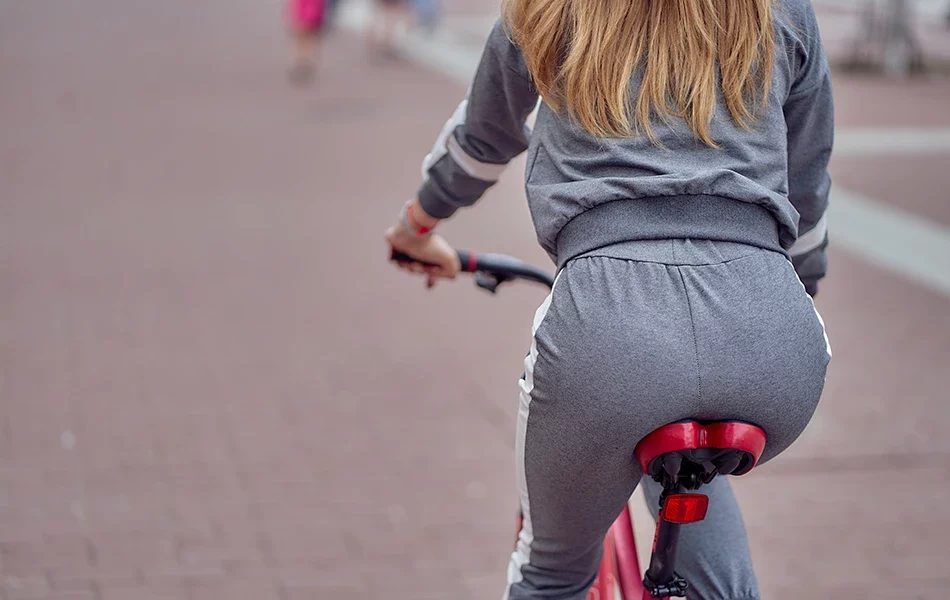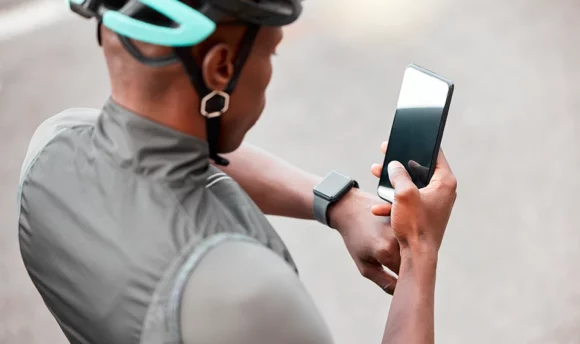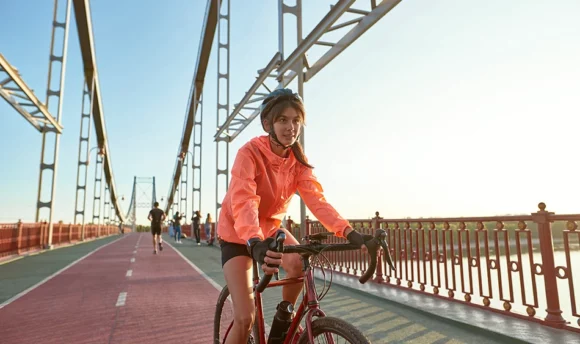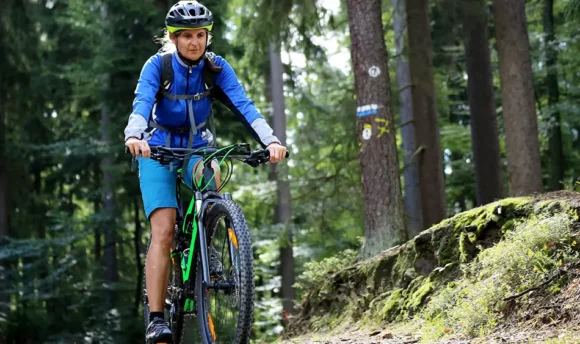Does Cycling Make Your Butt Bigger or Smaller? Dispelling the Myths
Some people train hard to get a bigger butt, but is cycling the way to do it? We bring to light the impact of cycling on your gluteal muscles and whether it can enhance the size of your derrière.

Cycling is one of the best activities for shaping your body. It’s great for weight control as it burns calories, helping you burn fat and build muscle in the lower and upper body. With regular cycling sessions, you can expect a better body composition overall.
As cycling works the leg and glute muscles, you might wonder if you can obtain a bigger butt with regular rides. But is it enough to noticeably grow your butt muscles?
Explore how cycling affects your glutes and whether you can count on getting that big butt.
Does Cycling Make Your Butt Bigger? Here’s the Truth
Cycling will not give you a bigger butt, but it can give you a stronger, more sculpted one. It’s more likely to shrink the size of your butt because it burns plenty of calories. It constantly works the glute muscles, helping you lose stubborn body fat in this area.
The muscle-building benefits of cycling are advantageous, but it’s not enough to significantly grow your butt. Still, it’s excellent for toning the legs and thighs for a more shapely physique and a firm lower body.
If a bigger butt is your goal, try switching up your training routine with strength training sessions and lower body exercises targeting the buttocks.
How Does Cycling Affect Your Body?
Cycling is a cardiovascular exercise, which means it’s an excellent workout for your heart, lungs, and blood vessels. It raises your heart rate and increases blood flow throughout the body. These benefits strengthen your heart health and reduce the risk of heart disease.
On top of this, cycling engages many muscles. It’s particularly good for the lower body, including your glute and leg muscles, but it also works other muscles like your arms and shoulders. The key muscles involved in cycling exercises are the following:
- Calf muscles: The gastrocnemius and soleus muscles in your calves work hard to maintain pedal strokes.
- Thigh muscles: The hamstrings and quads push the pedals down and sweep them back up.
- Glutes: The glutes activate as you push down on the pedals.
- The core: Cycling works the abdominal and back muscles to help you maintain balance and an upright cycling position.
- Arms and shoulders: You need your arms to grip and steady the bike. It works your biceps, triceps, and deltoids. You will notice the force on your arms mostly when cycling outdoors.
Muscle activation via cycling is not enough to build big muscles. However, cycling is a full-body workout that increases muscle mass, promotes fat loss, and encourages a more defined body shape.
How does cycling work the glutes?
Your glute muscles comprise three muscles; the gluteus maximus, gluteus medius, and gluteus minimus. All three work together with your hips to create a rotating movement as you hit the pedals.
The gluteus maximus is the largest muscle in the human body. It works alongside the semitendinosus and semimembranosus muscles to extend the hip. As you cycle, this powerful muscle initiates the downward stroke of the pedaling action.
The medius and minimus muscles are smaller but just as important. They enable the rotation of the hips and help your hips remain stable.
When Riding a Bike Makes Your Butt Bigger
Cycling can support your efforts to achieve a bigger butt when combined with other forms of exercise, like lifting weights. It doesn’t create enough resistance to make your muscles bigger, whereas resistance training with heavy weights places enough stress on the muscles to aid growth and promote a jiggly butt.
Strength training exercises are great for boosting your glutes. Alongside riding a bike, it can help to add squats, lunges, deadlifts, bridges, and hip thrusts to your workout.
Interval training is another way to help get a bigger butt. A HIIT (high-intensity interval training) workout focusing on the glutes quickly kicks your butt into shape. It also enables you to burn more calories in a shorter time, lose fat, and keep your heart healthy.
Try to balance cycling and strength training, as too much cardio can hinder your chances of building muscle. This is because your body takes energy from muscle tissue if you don’t consume enough calories to fuel your workouts. Overtraining can also lead to injury and fatigue.
The Centers for Disease Control and Prevention recommends a minimum of 150 minutes of moderate-intensity exercise or 75 minutes of vigorous-intensity exercise weekly. You can use this as a guideline when planning your workout schedule.
FAQs
Cycling is great for your butt because it works all three gluteal muscles. Regular sessions can lift, strengthen, and tone your butt. However, cycling is unlikely to give you a larger butt without pairing it with strength training sessions.
Cycling is good for burning fat in common problem areas like the thighs and buttocks. Frequent cycling sessions can help you reduce the size of these areas while toning and strengthening the muscles.
Cycling daily will improve your overall health. It’s an ideal sport for increasing your cardiovascular fitness level as it strengthens your lung and heart health. It can also aid muscle growth and strength, weight loss, and improve mental well-being.
All three of your glute muscles work constantly while cycling. This might result in larger, stronger butt muscles for some people, while others might develop a smaller, toned butt.
A Word From a Personal Coach
Whether outdoors in the fresh air or riding a stationary bike at an indoor cycling class, cycling is an excellent cardiovascular activity. It has multiple health benefits – you can lose weight, burn calories, blast body fat, and lower your risk of developing chronic diseases.
It can make your butt more defined by losing fat, but cycling alone won’t help you build more muscle in your glutes. It’s best to include strength and weight training in your routine. These activities place enough stress on your muscles to create tears. As the muscle repairs itself, it grows bigger and stronger.
Building your strength will help prevent injuries while cycling and minimize joint strain. Additionally, having a stronger butt and legs will improve your performance as you’ll be better able to push harder and power through your bike rides.
Conclusion
Biking is a great exercise for working your entire body. It makes your arms, core, legs, and glutes work hard. And while it’s perfect for helping you reach your cardiovascular fitness goals, it’s not the best for growing a bigger butt, as it doesn’t place enough load on the glutes.
That said, you can couple cycling with weight training and glute-specific exercises, such as donkey kicks, deadlifts, and squats, to increase your glute size.

















































 Select your language:
Select your language: 








